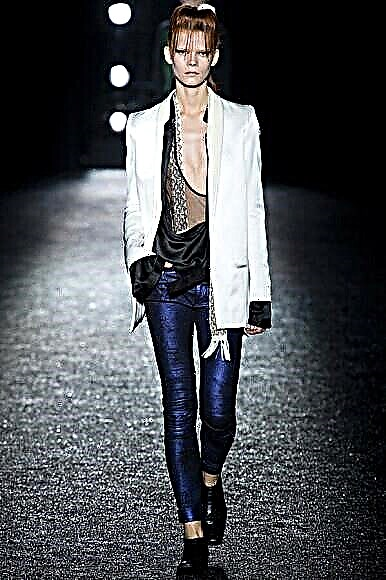In our short excursion - the history of the dress as words and concepts + pictures illustrating the stages of the "evolution" of the dress.
Dress: the origin of the word

Photo: 2tout2rien.fr
First, about the etymology, that is, about the origin of the word.
The modern word "dress" comes from the ancient Russian "payѥ", which means "clothing". "Pay" is formed from "pay", or "fees". “Plat”, in turn, means not only “scarf” (not the most commonly used meaning in modern language), but also “a large piece of canvas or canvas”. Thus, “dress” and “shawl” are related words. Scientists report that the word “dress” was formed from “boards” according to the same principle as the plural of the word “brothers” from “brother”: that is, a “dress” is something made or assembled from several “boards” pieces of fabric.
The history of fashion shows and Fashion Weeks: from private shows to grand shows
Dress: the history and evolution of the concept


Photo: nidubhchair.tumblr.com
When pronouncing a “dress” today, we most often mean a very definite thing: the subject of a woman’s wardrobe with a bodice and a skirt (the rest is optional). Meanwhile, the word “dress” meant, in principle, any clothing worn over clothes, both male and female, more recently, several decades ago. For example, the explanatory dictionaries of Ushakov and Ozhegov give both concepts as equivalent: dress as an exclusively female outfit, and dress as a collective designation of clothing in general.Perhaps the second meaning sounds a bit old-fashioned today, but so far it has been recognized as a “worker” ... Even in the early to mid-last century, one could quite see, for example, the store signboard “Male and female dress” - of course, this meant clothing as a general concept. At the same time, at the dawn of its existence, a dress - whole clothes with a top and a skirt - was worn by both men and women.

Dresses vs pants: millennium evolution
Photo: pinterest.co.uk/ccthebooknerd
It is believed that the dress "grew" from ancient cloaks and wraps. The first prototype of the dress appeared in Ancient Greece: two pieces of fabric were fastened with pins on the shoulders and a belt at the waist. The Byzantines first came to vestments with full sleeves. Initially, everyone wore dresses (including the primordial Russian sundress was both female and male clothes). Pants existed, in principle, but were “specialized” clothes for those who rode a lot (the same ancient Romans considered that clothing with trouser legs was “barbaric”, related to the culture of barbarians). Men began to dress in bulk from dresses to trousers only in the Middle Ages - this is exactly the time that can be considered the birth of a dress as an approximation to modern concepts.

Some moments of the evolution of women's dresses, XII-XXI centuries.
Photo: lilsuika.deviantart.com
The history of the mannequin: from a wooden idol to an art object
The dress became an exclusively female wardrobe since the 15th century. It is characteristic that it was then that it began to change significantly and become more complicated - in general, one way or another, to be decorated. In the XVI-XVII centuries, corsets, puffy skirts and sleeves came into fashion.Theatrical baroque in the eighteenth century was replaced by a lighter rococo, after another hundred years simpler silhouettes returned to fashion. Frames of dresses began to lighten, however, crinolines, tunics, petticoats nevertheless made the outfits quite “clumsy” and complicated.
The revolution happened in the twentieth century: at first the dresses were freed from the corset top and many lower skirts, then the length began to decrease. At first, even the demonstration of ankles made a sensation, but in the 1920s dresses came to fashion knee-length and a little higher.




Photo: lolita-wardrobe.tumblr.com, 2tout2rien.fr, pinterest.co.uk/ramneekkaurofficial
In 1926, a small black dress appeared - it was invented by Coco Chanel. In the 40s, lush skirts and lantern sleeves were in fashion. During the world wars, dresses were simple, to the knee, in a rectangular silhouette. Femininity and chic returned to fashion with a new look after the war thanks to Christian Dior. In the 50s, cocktail dresses spread. The 60s brought mini dresses, the 70s brought hippie and disco styles, the 80s brought pop art and geometricity. Since the 90s, fashion for dresses has ceased to be so unambiguous. For the last three decades, a dress in a retro style can be fashionable, as well as completely modern, and long, and super short.

The history of art in the history of dresses: the twentieth century
Photo: pinterest.co.uk/pacforkids



